 Signin with Google
Signin with Google Signin with Facebook
Signin with Facebook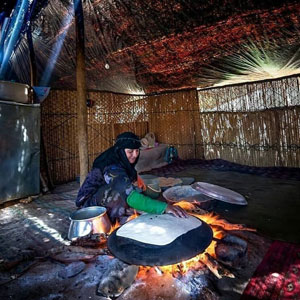


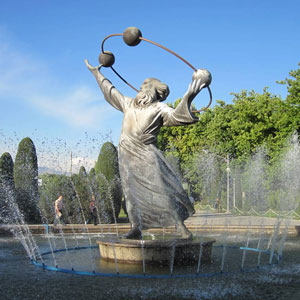 Activities,Culture,History,Literature
Activities,Culture,History,LiteratureChahrshanbe Suri, the Iranian Fire Festival to Purify the Souls
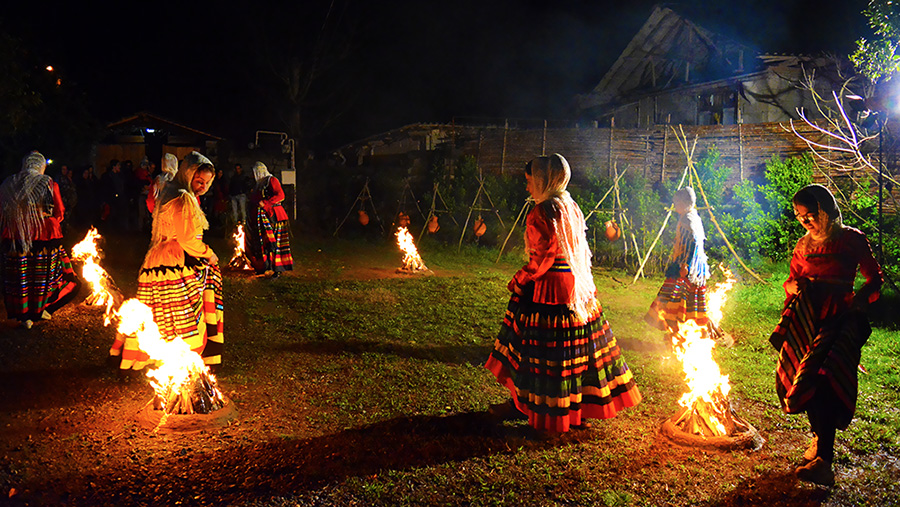
Every year at mid-March, while the Persian New Year approaches, it is time to perform a ritual of purification and good luck in Iran, and many neighbouring countries. Such customs have been at the centre of the Persian culture, thanks to a beloved tradition: Chaharshambe Suri/Soori, the Fire Festival.
The name of this festival comes from the word "Chaharshanbe", which is namely "Wednesday" in the Persian language, and the word "Suri", which refers to red, or ruddiness. It is, in a way, "The Red Wednesday", but is better known as the "Fire Festival". For centuries people have been celebrated on the evening of the last Tuesday of the Persian Solar Year, a few days before the Persian New Year's Eve, "Nowruz".
Chaharshanbe Suri is indeed all about getting rid of the ending year's misfortune and bad luck while hoping for a bright and joyful New Year. But where do these rituals and beliefs find their roots?

Driving the devil's eye away
The fire has been a sacred element in ancient Persia, yet Chaharshanbe Suri does not have roots in the first monotheist religion of Persia directly. However, Zoroastrians used to light huge fires on top of the hills during a winter festival, called "Sada/ Sade Festival", which might be an ancestor of Chaharshanbe Suri.
Lighting up bonfires to welcome the return of spirits
Chaharshanbe Suri might find its roots in another Zoroastrian tradition related to the fire. During the last days of the year, Zoroastrians believed the spirits of the dead (called "Fravashi") would come back to Earth. To honour guests, believers would clean their house (a custom still applied for Nowruz in Iran as "Khane-Tekani"), prepare food, and light up bonfires on the rooftops of their houses to welcome the return of the spirits.
Purification from the fire
From the Achaemenid to the Sassanid Empires the practice of fire celebrations has a long history in Iran. Under the Samanid Empire, kings would set a large fire on the last evening of the year, then called "Shab-e Suri" ("Red evening"). For the New Year, Sassanian kings also spread the customs of lighting up fires in sacred places, in order to purify the contamination from there.
In Persian literature's most famous book, the "Shahnameh" ("Book of the Kings"), the Persian Poet Ferdowsi uses fire as a symbol of purification in the story of Siavash. This latter was a legendary prince accused of a crime, which had to cross a corridor of fire to prove his innocence. "If I'm a sinner, I will burn in the fire. If I'm clean, I will cross the fire", said Siavash/ Siyavush who remains a symbol of purity in the Persian culture, and is seen by some as related to the customs of Chaharshanbe Suri.

The folklore song of Chaharshanbe Suri to give your pallor to the fire
Indeed, the main custom of Chaharshanbe Suri is to cross a bonfire, by jumping over it. However, this habit has become popular after the arrival of Islam in Iran, and it would be considered as an insult to jump over the sacred element for a Zoroastrian. Throughout time with the Muslim conquest, these ancient customs have survived to become more secular. It is also believed that the choice of a Wednesday is related to the Arabs' superstition that this day brings a bad omen.
Everywhere in Iran, people gather brushwood to make bonfires outdoors. One or several bonfires are lit up so that people can jump over them several times while shouting "Zardi-ye man az to, Sorkhi-ye to az man". It literally means "My yellow colour is yours, your red figure is mine" as if making a pact with the fire to exchange one's pallor (meaning pain, sickness, unhappiness) against the fire's redness (its warmth, energy, life).
Getting rid of the past year's bad luck and negative energies, people can serenely enter a fortunate New Year. To preserve the good luck from the fires, no one is supposed to blow it, and the red flames are left to die out by themselves, or extinguished with water.
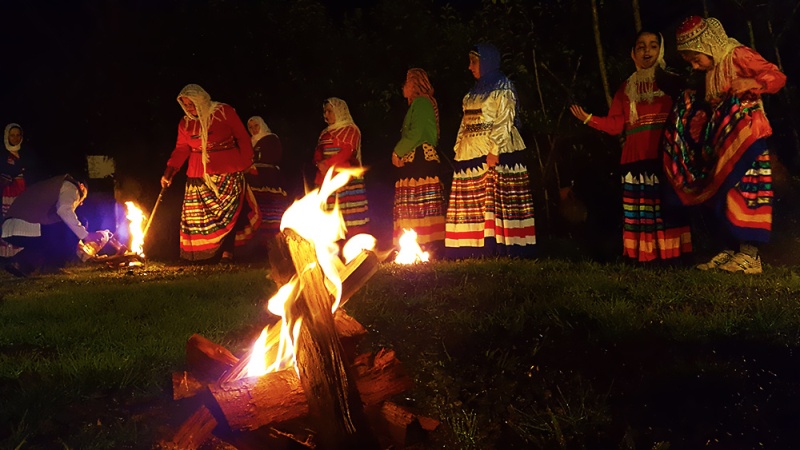
Various costumes to push away misfortune
More than three millennia after its birth, Chaharshanbe Suri stills carries this spirit of purification, of preventing from bad luck and evil's eye. It goes from playing an instrument to ward off bad luck to cooking and eating a specific soup ("Ash-e Abu Darda") to cure long-time sickness, and fortune-telling. "Ghashogh zani" is a well-known costume that cooking this soup is the result of it; Women wear Chador or cloak and knock every door to gather ingredients of soup from neighbours while beating on a pot in their hands with spoons to let people hear they are coming.
A special mix of nuts, fruits, and sweets are an inseparable part of the night of Chaharshanbe Suri in each part of the country.
In many places, people still affectionate a tradition called "Kuzeh Shekani": It consists of smashing a jar, sometimes containing salt and coins, from the roof of the houses. By breaking down on the soil, the jar symbolically spread away from the entire household's misfortune.
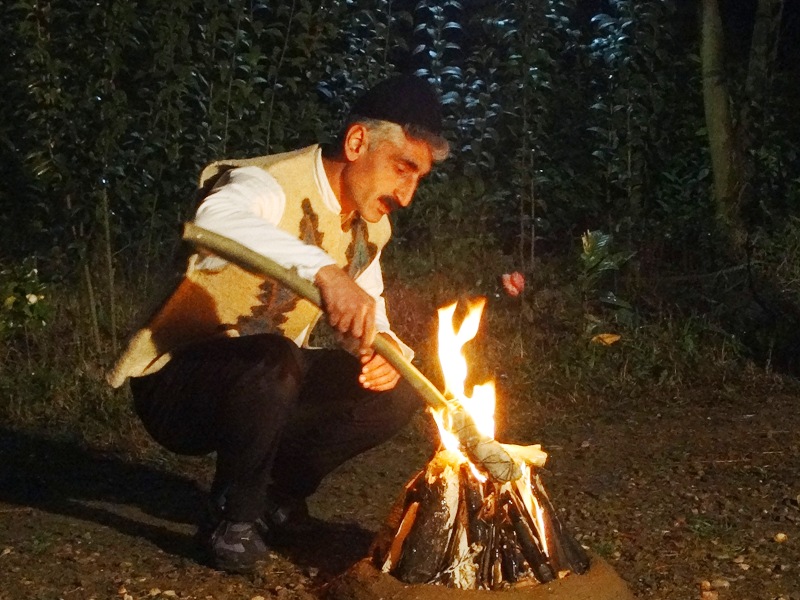
A moment for men and women to meet
Man rituals of Chaharshanbe Suri are made to give an opportunity for single men and women to meet each other. In the Northern regions, a man wishing to know his chance with a specific woman is invited to perform the ritual of "Shal Andazi": fastening a rope to a basket, he drops this latter into an opening of the woman's home. Inside the basket is a gift that the woman can accept or reject to signal her intentions. On the other hand, families can also put something inside the basket to let the man know of their approval or not.
Several rituals are also performed throughout the country. Those rituals offer variations from one region to the other and bear the influence of Islam. It shows, once again, how this secular festival passes through the ages to become, nowadays, one of the most appreciated moments of the year for Iranians all over the world.

